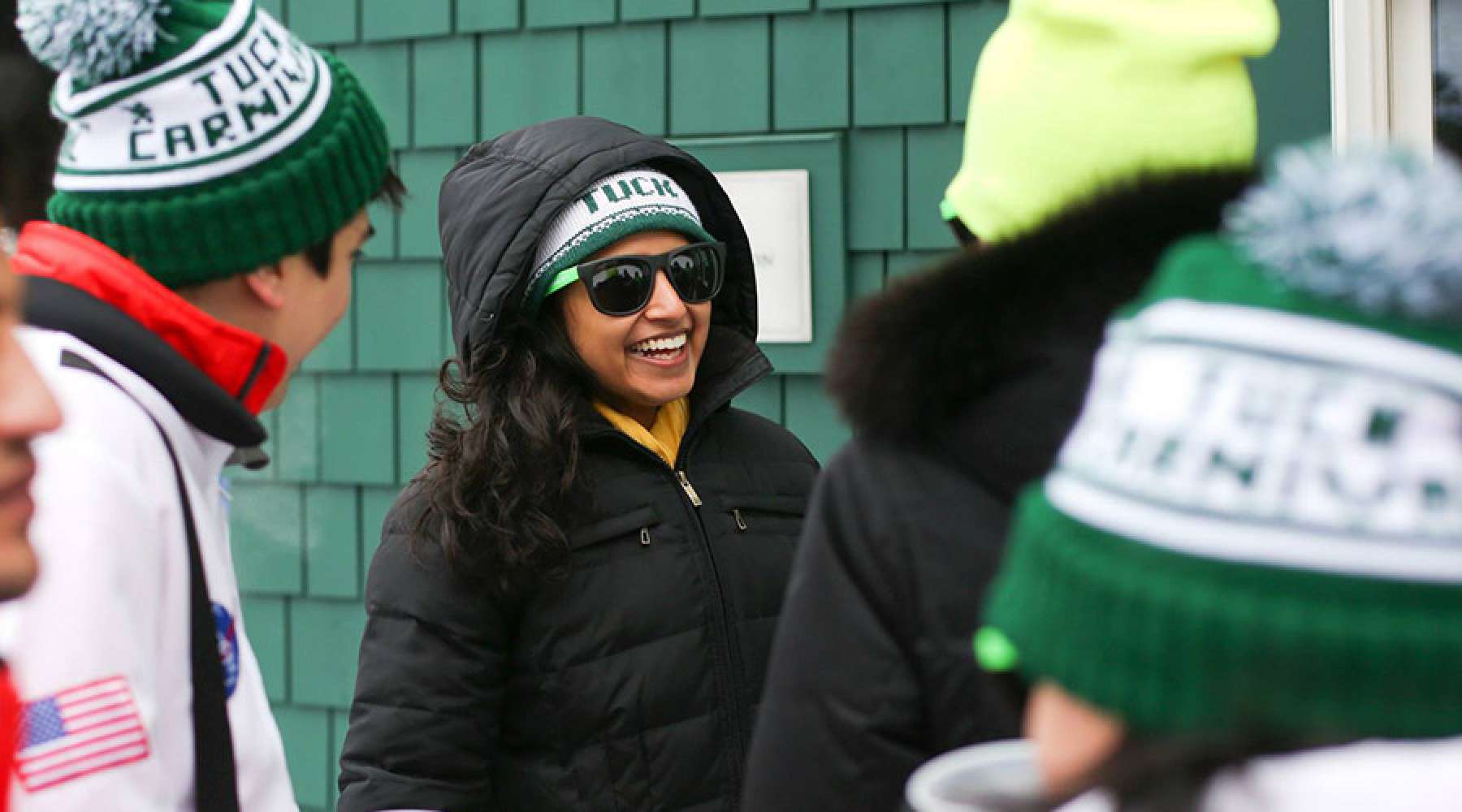
 Megan Kelso is a freelance graphic designer and illustrator for stationery products. You can see her work at [url=http://www.meganlkelso.com]http://www.meganlkelso.com[/url]. Megan grew up in Ithaca, New York, studied art at Colgate University, and then lived and worked in Washington, D.C. for several years. She now lives in Sachem with her husband Mark, a T’17.
Megan Kelso is a freelance graphic designer and illustrator for stationery products. You can see her work at [url=http://www.meganlkelso.com]http://www.meganlkelso.com[/url]. Megan grew up in Ithaca, New York, studied art at Colgate University, and then lived and worked in Washington, D.C. for several years. She now lives in Sachem with her husband Mark, a T’17.
We know it's far away, but you can never be too prepared! Here's some advice by Megan Kelso TP'17 on what you should bring with you to prepare for the winter. Having lived most of her life in the coldest, snowiest places in the U.S., Megan developed a few winter clothing tips and tricks over the years. She shares 7 steps to keep you warm this winter—as they say, there’s no such thing as bad weather, just bad clothes.
I wear base layers under my everyday clothes when it’s below about 15°F. Polypropylene and wool are the warmest and best if you’ll be spending a lot of time outside. Silk base layers are also warm and comfortable, and jockey waffles are a classic. Fleece-lined leggings are good, under jeans or layered over long underwear, when you won’t be very active or outside too long. However, if you really need to be warm, don’t wear cotton (fleece) as the layer closest to your skin.
For the warmest layering, follow this pattern: man made/natural/man made. Wear a synthetic fabric (preferably polypropylene or another absorbent athletic material) next to your skin, then follow that with a thick natural fiber, like a wool sweater, and follow that with a waterproof coat of synthetic material.
Nothing works as well as wool socks to keep your feet warm, and no wool is as warm and soft as Merino wool. Look for brands like Smartwool, People Socks, or Darn Tough Socks, and “100% wool” somewhere in the description. It’s better to wear one pair of good socks than to layer two mediocre pairs, because that will reduce circulation to your feet and make them colder.
Keeping your head warm makes a big difference in how warm your body feels overall. Again, wool is the best material. A fleece-lined wool hat is even better, since it prevents the wind blowing through the knit. Also, make sure your hat completely covers your ears. You’ll also want a big scarf to wrap around your neck and bury your chin and nose into.
Mittens are warmer than gloves, because your fingers can keep each other warm. You can get big down mittens for skiing, but fleece-lined wool mittens are the best for everyday wear. Real leather gloves are also pretty warm, and a little fancier if you’re dressing up. Thin cotton or fleece gloves are ok, but worse than wearing nothing if they get wet.
If you're going to be outside for a while, and your feet or hands always get cold, get some warming packets like HotHands or Toasti Toes. Toe warming packets seem to get hotter than the ones meant for hands, so I use toe warming packets for both hands and feet.
If you have nothing else on this list, get a warm winter coat. A 100% down coat is the warmest, and will drastically improve your comfort over the winter. For ladies, I recommend a coat that is longer than thigh-length and has a belt at the waist, to prevent wind from blowing up the coat. A hood will be greatly appreciated when it’s snowing to keep your hair dry.
There is nothing worse than walking around in the winter with wet feet. Get some waterproof (not “water-resistant”) boots that go mid-calf or higher, or else snow will seep into the top. In a few weeks, you’ll see a ton of people sporting LL Bean and Sorel boots around campus. Because they’re unlined, Bean boots are not quite as warm as Sorels, but some people don’t like Sorels because they’re a little more heavy and clunky. You don’t have to go with brand-name boots, any waterproof snow boot will work. If you live off campus, you might consider wearing “commuting boots” and changing shoes once you get inside.
Wool, tweed, fleece, silk, and thick cotton sweaters are popular in New England for a reason: they’re great at protecting against the bitter, wet weather. If you add more of these fabrics into your everyday clothes, you’ll be noticeably warmer during the day. Also remember to layer, because it’s still warm and toasty inside!